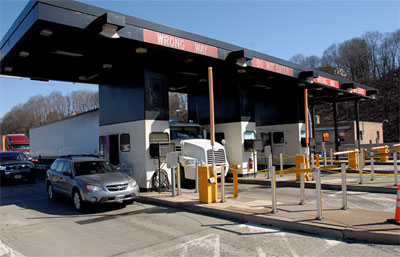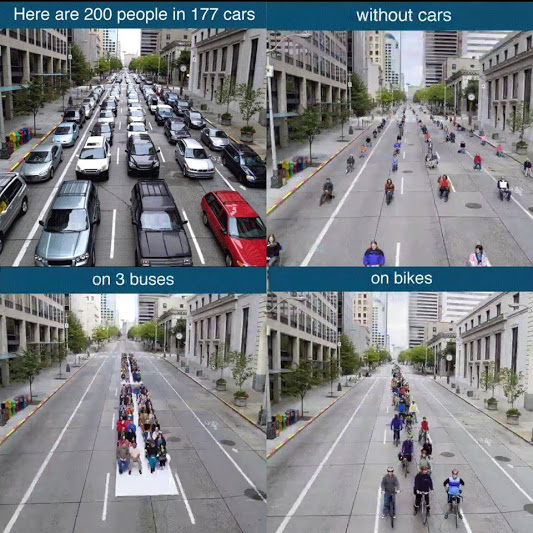L&T to convert Nagpur into country’s first large-scale integrated Smart City
August 19, 2016
Heavy engineering and construction major Larsen & Toubro has been chosen by the Maharashtra government to convert Nagpur into the country’s first large-scale integrated Smart City. In the first phase, L&T’s Smart World & Communication business vertical, which is a part of L&T Construction, will cover laying of 1,200 km of optical fiber network backbone in the City of Oranges, creating 136 city wifi hot-spots at key locations, establishing 100 digital interactive kiosks and developing city surveillance systems with 3,800 IP-based cameras.
Further, as an avant-garde endeavor, the city has identified a strip of approximately 6 km (from Japanese Garden Square to Orange City Hospital Square) to be developed as a ‘Smart Strip’ with state-of-the-art systems powered by smart ICT interventions like smart transport, solid waste management, smart lighting, etc. This is to be leveraged in a phased manner to ultimately cover the entire city.
“After Jaipur, this is the most significant step in the country’s journey towards establishing smart cities and we are delighted to be participating in transforming Nagpur into one,” said S N Subrahmanyan, Deputy Managing Director and President, Larsen & Toubro. “As a master systems integrator, we will provide leading-edge technology solutions including high-end analytics, mobile surveillance and high-tech tools like drones,” he added. L&T’s Smart World business has executed the smart city project in Jaipur and is executing India’s largest city surveillance project comprising 6,000 cameras across 1,500+ locations in Mumbai. Projects are also underway in Delhi, Lucknow and Hyderabad, the company said.
Road Projects worth INR 37000 Cr coming up in the North-East
August 16, 2016
The government has informed law makers that there are 197 road projects that are being developed in the North Eastern region of the country under the watch of Ministry of Road Transport and Highways (MoRTH). The total length and sanctioned cost of these projects are 4320.95 km and Rs 37691.05 crore respectively. This was stated by Jitendra Singh, minister of state for Development of North Eastern Region in a written reply in the Rajya Sabha. “Government is, in fact, giving special attention to infrastructure development projects, such as, road, rail, communication, and telecom network in the North Eastern Region,” the Minister said in his statement.
Apart from the road projects, 20 major railway projects comprising 13 new lines with a length of 2,624 km, costing Rs 52,030 crore have also been taken up in the North Eastern Region. “An expenditure of Rs 2,1336 crore has been incurred on these projects up to March, 2016. An outlay of Rs 5,040 crore has been provided for 2016-17 for these projects and for the residual liabilities of some completed projects,” the minister informed the members.
In addition, the North Eastern Council (NEC) is implementing 715 various developmental projects in North Eastern States, which are under way at a total approved cost of Rs 7,14,864.98 lakh. Ministry of Rural Development is providing assistance to respective state governments under the Pradhan Mantri Gram Sadak Yojana (PMGSY) programme.
IIT-KGP to suggest technology for maintenance-free highways
August 16, 2016
Maintenance of the country’s national highways for a longer period could get a new lease of life with the prestigious Indian Institute of Technology-Kharagpur set to embark on an ambitious project which will suggest technologies for maintenance-free highways. The step is also seen as environment friendly as it will need lesser natural resources. At present, the construction of these highways requires a monolithic (in-situ) layer of cement concrete normally 300 mm thick, laid continuously over the prepared surface. The idea is innovation of technology to optimise the design of concrete pavement in its traditional form which can facilitate faster construction at much cheaper costs.
The National Highways Authority of India (NHAI) and IIT-Kharagpur signed a pact recently for a research project to develop a technology to construct long-lasting maintenance-free highways in the country. “The duration of the research project is three years and NHAI has paid Rs 1.25 crore for the project, excluding cost of construction of trial pavement section,” NHAI said. NHAI and IIT Kharagpur will develop a technology to construct Panelled Cement Concrete (Pre-fabricated in a small panel size) which can replace the design of construction of existing cement concrete road.
The common experience in the national highways are that it is prone to damage and needs frequent maintenance due to adverse climatic conditions such as rain and hot weather since they are generally paved with bituminous (asphaltic concrete) material produced from refineries. To overcome this problem, the government has recently announced a policy for the construction of concrete pavements for all major highways due to their longevity and maintenance-free life. “The paneled concrete pavement laid on a lean concrete base can fulfill the Government of India’s dream of providing long-lasting maintenance-free pavements at a cost at par with those of asphalt pavements,” NHAI said.
ICICI to issue 4 lakh ETC tags by March 2017
August 10, 2016

ICICI Bank – the largest private sector lender of the country – aims to issue four lakh electronic toll collection tags by March 2017. The private sector lender is the first to launch and implement an inter-operable Electronic Toll Collection (ETC) platform on national highways. The bank is also targeting to record three million transactions by the end of the current financial year. The bank has made ‘Electronic Toll Collection’ live at 343 toll locations across major national highways of the country, which covers over 90 per cent of the tolled national highway network.
Chanda Kochhar, MD & CEO, ICICI Bank said, “Currently, we have made this service live across 343 toll locations in the country, thus covering over 90% of the tolled national highway network. We are closely working with the Road Transport & Highways Ministry, NHAI (National Highway Authority of India) and IHMCL (Indian Highways Management Company Limited) to cover more highways under ETC in the near future.”
“ICICI Bank is delighted to be associated with the implementation of Electronic Toll Collection (ETC) on national highways. We were the first bank in the country to launch this innovative service and have successfully set benchmarks that are now being leveraged to create national standards for inter-operability between all banks,” Ms Kochhar added. Overall, ICICI Bank has issued over 30,000 FASTags which are currently in use for electronic toll collection. The bank was the first to launch this service on the Mumbai – Vadodara corridor of NH8 in 2013.
FASTag is a simple to use, reloadable tag which enables automatic deduction of toll charges and lets you pass through the toll plaza without stopping for the cash transaction. FASTag is linked to a prepaid account from which the applicable toll amount is deducted. The tag employs Radio-frequency Identification (RFID) technology and is affixed on the vehicle’s windscreen after the tag account is active. A vehicle with the ‘FASTag’ can use the dedicated lanes on either side of the toll plaza to avoid long queues in the cash lanes of the toll plazas.
Hybrid Annuity Model makes inroads into BOT projects
August 9, 2016
Did you Spot the difference in congestion level?
August 26, 2015
Boldness plus Practicality for emerging economies
June 24, 2015
Boldness plus Practicality for emerging economies
Message for our Readers
June 15, 2015
Dear Indian Tollways Readers,
Traffic Management at Gurgaon Faridabad toll is pathetic during traffic hours. It takes more than 15 minutes to cross the toll.
There is no lane management. Some people would fly out of queues and create chaos and damage to vehicles.
Specifically situation is pretty bad on Monday and Tuesday mornings .
New congestion points developing at Valley view apartment, Ghata Turn and red light which was not the case month back..
Please express you opinion and solutions in comments.
Case Studies on Smart Traffic Initiatives in Amsterdam, Singapore, Tokyo, Glasgow and London
May 5, 2015
|
|||||||||||||||||||||||||||||||||||||||||||||||||||||||||||||||||||||||||||||||||||||||||||||||||||||||||||||||||||||||||||||||||||||||||||||||||||||||||||||||||||||||||||||||||||||||||||||||||||
| |||||||||||||||||||||||||||||||||||||||||||||||||||||||||||||||||||||||||||||||||||||||||||||||||||||||||||||||||||||||||||||||||||||||||||||||||||||||||||||||||||||||||||||||||||||||||||||||||||



















